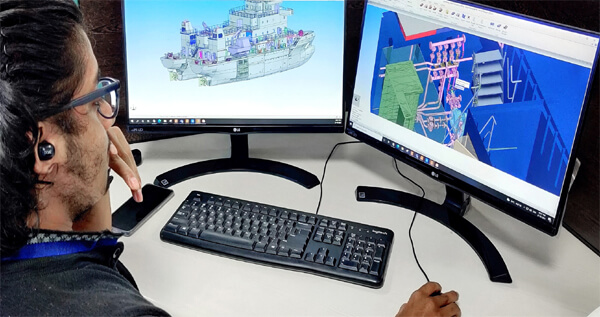Implementation of a New Ship Design Solution
Will It Improve Efficiency or Jeopardize Ongoing Projects and Work Processes?

It is not news to shipbuilders that there are benefits to be gained from modern design solutions and a data-driven approach to shipbuilding: accelerating the time to market, reducing costs, and shortening lead-times to name a few. What is holding shipyards and ship design offices back from implementing these clearly beneficial solutions?
Risk or benefit? Design solution implementation has far-reaching implications
There is no simple answer to this question. One area of concern is that a new design solution has very far-reaching impacts on all facets of the ship design and shipbuilding process as well as shipyard organization overall and that there is a significant risk of making things a lot worse before you make them better.
Depending on how long it takes before things become better, the financial and business risks are immense. Maintaining the status quo can in many cases be easier, especially if the shipyard is currently efficient and the orderbook is full. Why risk downtime or worse?
To this, I would say that I see where the concerns come from but that the benefits to be gained simply far outweigh the risks, especially if you put proper and proven systems in place to mitigate the risks.
One should also consider taking a longer-term perspective, you may be efficient now with current methods and tools, but how competitive will you be in 10- or 15-years’ time if you do not modernize now? Will the new generation of ship designers accept the use of outdated tools? Can experienced designers adopt new technologies and adapt to new tools? Can designers respond fast enough to the challenges posed by new regulations in shipbuilding and new industrial practices such as scrubbers, ballast water retrofits, LNG, LPD, or hydrogen challenges imposed by modern society?

Implementation without jeopardizing ongoing projects and existing working processes
At the end of the day, even when all fears related to a new ship design solution are alleviated, the sheer scale of the implementation project and general resistance to change is enough to cause hesitation for many.
There are, however, ways of getting teams up and running quickly so that benefits can be seen fast. It is a question of managing the risks and implementing new solutions in a meticulously planned, systematic, and shipyard-specific manner. Choosing an experienced partner that has been there and done that for organizations similar to yours also goes a long way to mitigating risks. Using a tried and tested approach to implementation is a solid foundation for success.
Should you implement on your own, with support and guidance from the solution provider, or use consultants?
Nowadays, ship design solution implementation projects are often outsourced to local representatives or even partner consultancy companies, who often have only limited knowledge about the application itself and only a consultative feedback loop to the developer of the solution. This way, solution providers tackle the lack of their own implementation resources and create distance between themselves and the end-users. Having direct access to the solution provider enables fast feedback and provides users with the opportunity to tap into the provider’s in-depth functionality knowledge. It also allows users to learn from best practices of using a particular solution.
We have collected all the best practices from our over 35 years of experience gained in discussions, feedback, and implementation projects at over 900 ship design companies and shipyards in one white paper.
This article is sponsored by CADMATIC. Learn the best practices of CAD solution implementation – download white paper – about a systematic and proven method of implementing new design solutions at ship design companies and shipyards and managing related risks.
The opinions expressed herein are the author's and not necessarily those of The Maritime Executive.
